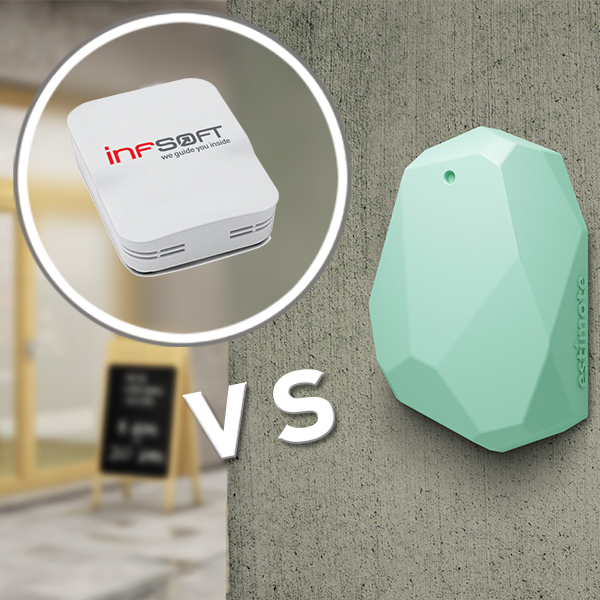Indoor positioning and indoor navigation are strongly marked by software products: For example in order to create a digital map, to calibrate routes, to evaluate results and to give users access via app. But as soon as it comes to choosing the suitable positioning technology, hardware plays an important role.
USING BEACONS FOR INDOOR POSITIONING
Bluetooth beacons are the most frequently used method for indoor positioning. When Apple introduced the iBeacon standard, they started to boom and related formats such as Google’s Eddystone are becoming more and more popular because of their interesting features. The advantages are obvious: They are extremely flexible because they run on batteries and are affordable. Thus, temporary installations can be put into practice without any problems. The energy consumption of beacons is low, thanks to the modern Bluetooth Low Energy (BLE) standard. Battery runtime is rising constantly. Beacon management platforms make it easy to maintain the infrastructure. Accuracy is between 1 and 3 meters which is more than enough for most use cases. Additionally, beacons work cross-platform in client based settings – using WiFi as a positioning technology excludes all Apple devices.
infsoft has installed a typical client based solution at Zurich main railway station. Travelers profit from turn-by-turn navigation and a lot of useful information and offerings via app.
Server based solutions also work with beacons. For example they make it possible to find people and objects in large industry buildings (personnel tracking/evacuation), the analysis of itineraries, applications in the security sector (access control, theft protection, dead man’s handle) and workplace management. For those server based solutions an additional hardware component is necessary – infsoft Locator Nodes.
INFSOFT LOCATOR NODES – SERVER BASED TRACKING OF PEOPLE, OBJECTS AND ANIMALS
infsoft Locator Nodes are small, electrically-powered devices (for example based on Raspberry Pi), on which we install a firmware by infsoft. They can detect all devices, WiFi tags and beacons (stickers, wristbands etc.) and track them server based. In addition to positioning, the technology also allows for the analysis of visitor flows within buildings. Positioning accuracy is under 5 meters. infsoft Locator Nodes are connected to the electrical grid. They connect with each other so that only one of the devices needs access to the internet (via Ethernet, WiFi or UMTS). This kind of hardware is especially interesting for industrial areas. If you need support with your project, don’t hesitate to contact us.
Read more about beacons and indoor positioning
More information about server based tracking with infsoft Locator Nodes







